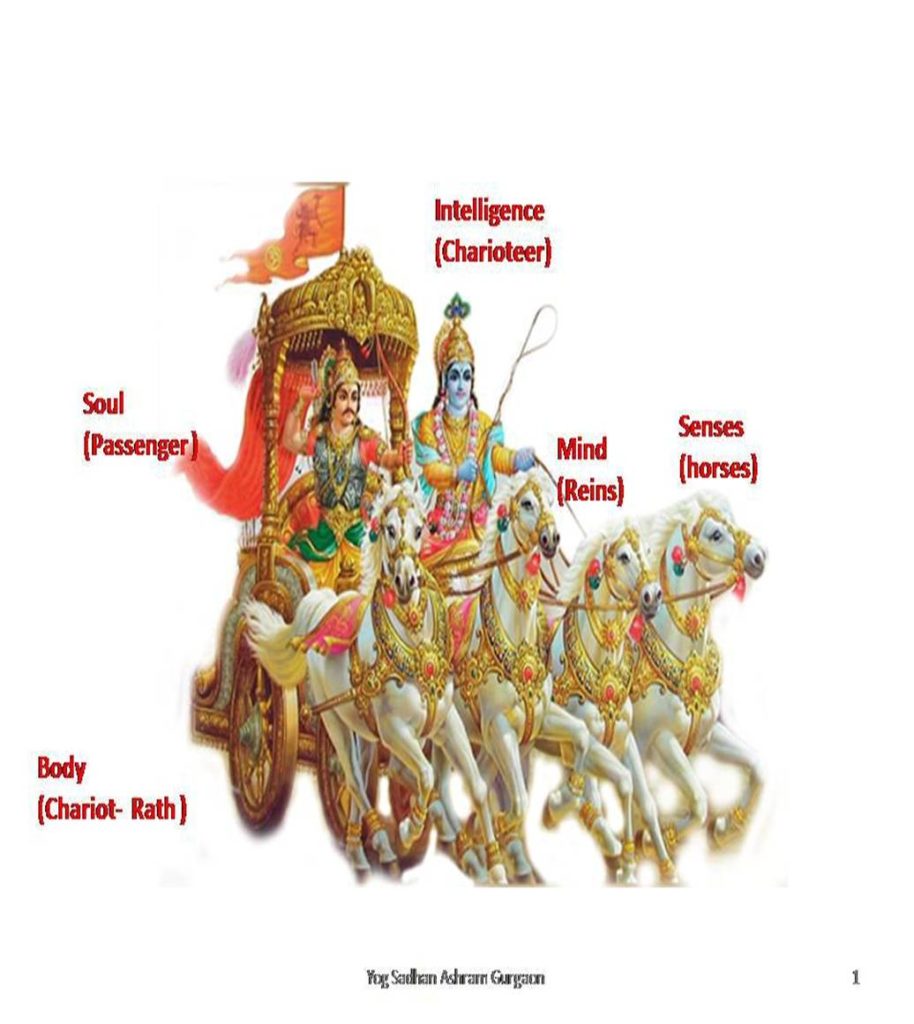Being vs. Doing
INSPIRATIONAL, 7 Aug 2017
The Secrets of Yoga – TRANSCEND Media Service
Multitasking is a great technique that allows us to achieve numerous goals in any given day, and technologies such as the computer and cell phone are available almost anywhere we go. Although convenient to our hectic schedules, sometimes it is difficult to relax in this world full of stimulations. Functioning in the present moment (being) without the constant concern of performing a task or doing something constructive (doing) is difficult, but can be achieved.
It is somewhat of a paradoxical argument to explain the concept of being while doing, because during the moment it is not a recognized behavior. Although either frame of mind can be a separate function, it is also a necessary step to learn how to incorporate the two ideas into daily life. Exploring both options may be the key to a healthy, insightful mind.
The Seemingly Never-Ending Cycle
Daily pressures rarely cease during and in some cases, after – business hours for many working individuals, as many demands must be met in a single day. During stressful times, it is difficult to retain the previous equilibrium achieved by spiritual or relaxing practices, such as hatha yoga. The fleeting sense of ease is difficult to grasp once it fades, and many yogis wish to regain the inner calmness present during their mental and physical exercise sessions. Practicing yoga seems to be the only way to feel relaxed at the end of a stressful day.
Although yogi may find their practice both calming and rewarding, there are many other methods that people use to unwind after work such as going for a walk or interacting with their family. During this period, one is able to feel present and composed. The time spent away from work is enjoyable, yet upon returning to the computer, or on the drive to the office the stresses of the day begin to mount. Tense, anxious feelings are overwhelming, and one is oft left yearning for balance.
Many individuals struggle with the preservation of peace. Spiritualists such as hatha yogis and meditators strive for balance by utilizing a number of resources; techniques learned through lectures, books, spiritual gatherings, and the guided practice of dhyana, an essential component to yoga, provide ways for people to benefit themselves during even the most agitating situations. Although information is supplied to benefit individuals by teaching them various methods of retaining composure, these same disciples continue to allow stress to manipulate their daily situations.
The lives of people today are undoubtedly hectic, with longer workdays and less time to unwind. These rapid changes come at an expense to our population. The stability of everyday life has suffered, as well. Friends, lovers, and careers are no longer expected to last for a lifetime, or even the upcoming years. Frequent and drastic changes can take a toll on one’s physical self, and demand a deeper assessment of our lives.
The fast paced day seems to lack a much needed simplicity, and a correlation between what we do and our being. Fax machines, electronic communication, and hand held digital devices submerge us in a constant whirlwind of mental stimulation. Diminishing relationships combined with and a wavering community and the stressors that seem to find their way into every aspect of our lives leave us feeling disconnected, and somewhat lost.
Ways to Combat Stress
In order to live a balanced life, distressed individuals must proactively combat the issues that relate to their frame of mind. Yogis can attend yogic retreats and seek the guidance of seniors and instructors, while others may find solace in becoming aware of their situation and maintaining their composure. Meditation may not be as readily practiced at the office or at home with the kids, but its teachings can help to connect spiritual separation to daily activities. Being and doing are in fact two separate entities, but with practice, the fusion of the two worlds can be achieved.
It seems like a simple approach to a difficult subject, but indeed it is not. Since the beginning of a person’s existence, there has been an emphasis placed on achievements. We set goals, accomplish them, and repeat the cycle. A person’s self worth has long been measured by how much they can do, in how little time.
Everyone feels the need to contribute to our society, as if life were a competition. Rarely does someone receive praise when they sit back, smell the proverbial roses, and enjoy their life. It is almost as if people do not remember or possibly never learned how to live in the now, how to exist in the state of being.
As explained by dialogue in the Bhagavad-gita, the human mind is fearful of rest. Our thoughts never seem to cease – even during sleep – but what would happen if they did? The question presents a dilemma of rationale. The mind is somewhat resistant to this idea, a natural instinct that expels us from exploring the unknown in any situation. Although many protection mechanisms benefit the human body, this particular feature can hinder the mind’s ability to grow.
Sadhana should not be confined to the yoga mat. Spirituality truly can exist outside of the yoga studio, away from yogic retreats, and without the company of fellow yogis. Sangha is an important aspect of the practice of yoga, but outside of this community, one must learn to resort back to teachings. In order to remain in the present time, one must pledge their body and mind toward the cause. If at a loss for inspiration, ask yourself one question: Where do my priorities lie?
Practicing Being
There are numerous ways in which a person can focus solely on the present time. When eating, driving, walking, or performing other daily functions, do not allow thoughts to crowd your mind. Give your complete self to that one task, and perform it methodically. Bhakti, or devotion, is key. In Zen Buddhism, meditation is described as just sitting.
Sacred texts such as the Bhagavad-gita are full of spiritual information that can place wandering souls, giving them insight and direction.
Hatha yoga serves as a tool for renewing the practitioner’s energy and uplifting their soul, due to the unwavering concentration of self, mind, and body that can be achieved through pranayama and asanas. Yogic experiences allow people to indulge themselves in the deepest, most concentrated form of relaxation. By the end of a hatha yoga session, yogis feel a more stable presence with a better sense of self. The time spent practicing yoga feels sacred, and many people wish to incorporate these important values into their everyday life. The intent to remain calm is present, but can fade following a yoga practice when the realities of the day are brought back into focus.
The name hatha yoga translates into English as forceful yoga, indicating what a great stress reliever it is. The main components of hatha yoga are mudra, bandha, asanas, and pranayama. Hatha yoga not only helps to form the body, but also aids in the development of emotions.
The goal is to let time fade away as though it does not exist. There will be no worry of deadlines or schedules or rush hour. When focusing on a single moment, there is no concept of actual time, there is just now the exact moment one is in. It may take practice to be conscious of being and doing, and learning how to combine the two mental states to live a balanced life, but it proves to be a fundamental device of the mind.
Go to Original – thesecretsofyoga.com
DISCLAIMER: The statements, views and opinions expressed in pieces republished here are solely those of the authors and do not necessarily represent those of TMS. In accordance with title 17 U.S.C. section 107, this material is distributed without profit to those who have expressed a prior interest in receiving the included information for research and educational purposes. TMS has no affiliation whatsoever with the originator of this article nor is TMS endorsed or sponsored by the originator. “GO TO ORIGINAL” links are provided as a convenience to our readers and allow for verification of authenticity. However, as originating pages are often updated by their originating host sites, the versions posted may not match the versions our readers view when clicking the “GO TO ORIGINAL” links. This site contains copyrighted material the use of which has not always been specifically authorized by the copyright owner. We are making such material available in our efforts to advance understanding of environmental, political, human rights, economic, democracy, scientific, and social justice issues, etc. We believe this constitutes a ‘fair use’ of any such copyrighted material as provided for in section 107 of the US Copyright Law. In accordance with Title 17 U.S.C. Section 107, the material on this site is distributed without profit to those who have expressed a prior interest in receiving the included information for research and educational purposes. For more information go to: http://www.law.cornell.edu/uscode/17/107.shtml. If you wish to use copyrighted material from this site for purposes of your own that go beyond ‘fair use’, you must obtain permission from the copyright owner.

